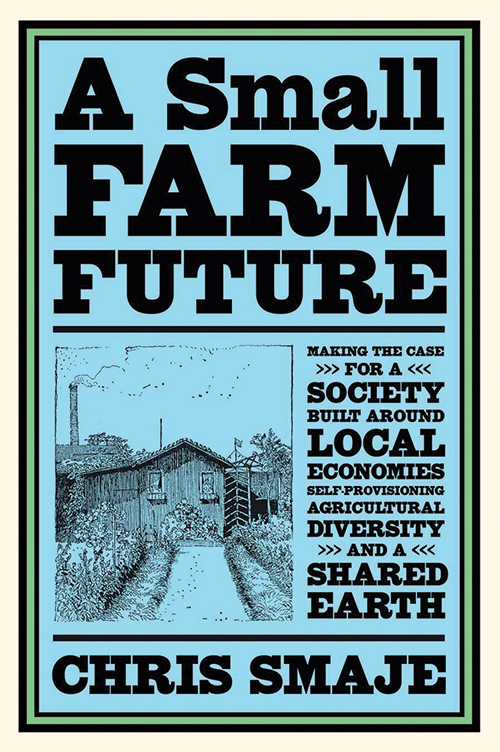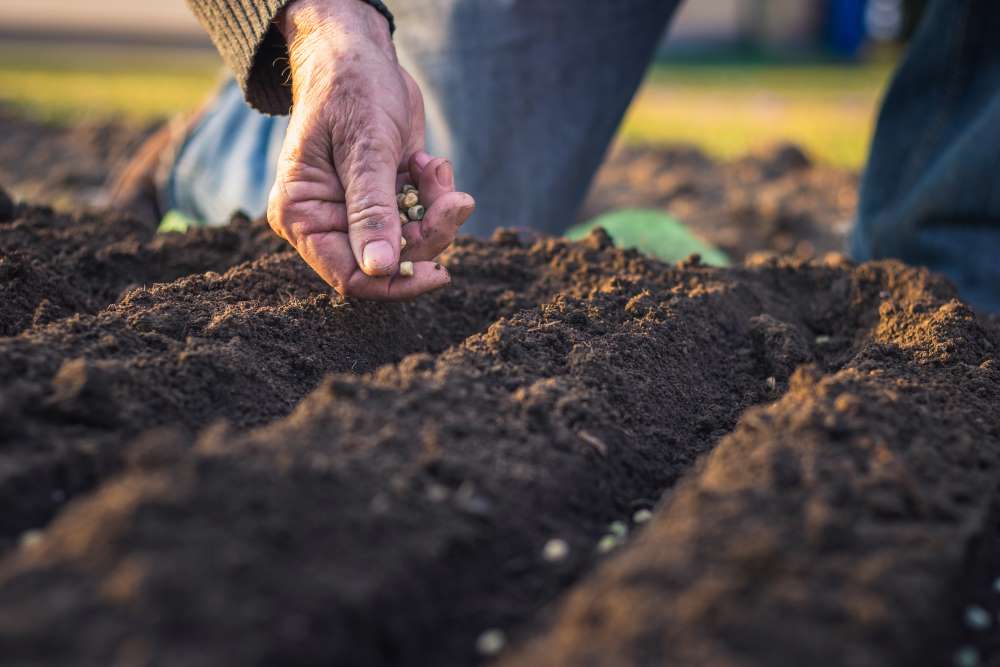
A Small Farm Future: Making the Case for a Society Built Around Local Economies, Self-Provisioning, Agricultural Diversity, and a Shared Earth
Reviewed by Pamela Haines
November 1, 2021
By Chris Smaje. Chelsea Green Publishing, 2020. 320 pages. $22.50/paperback or eBook.
It is written in Proverbs: “Where there is no vision, the people perish.” But we also need food. Chris Smaje, a small farmer in England, is a food visionary but one who is willing to wade into the murky depths of the daunting global crises we face in population, climate, energy, soil, consumption, water, land, health and nutrition, political economy, and culture. He also works to make good on his subtitle: “making the case for a society built around local economies, self-provisioning, agricultural diversity, and a shared earth.”
Smaje notes that industrial agriculture is a good fit for our current global economic system, where carbon is king; where value is systematically extracted from the hinterlands—whether local rural areas or colonized nations—to enrich the center; and where money is on a footloose search for the highest returns. To provision the world going forward, however, he argues for a very different food system: one that aims for “skimming energetic flows rather than mining energetic stocks.” With peasant farmers as the largest segment of the global workforce, increasing numbers of destitute urban dwellers in need of healthy work, and much land that could be farmed more intensively and sustainably, a well-run, diverse small farm system could be a solution to this tangle of seemingly intractable interlocking crises.
Unlike utopians, who by definition dream outside of constraints, Smaje centers and elevates constraint. Against our current age’s fervent belief in the ability of technological and economic “progress” to overcome all limits, he considers respectfully the constraints of climate, soil, energy, and scale, and puts his mind to provisioning the world within those constraints. He challenges us to take a stand against the dominant story line of inevitable progress, be willing to learn from what has worked well in the past, and claim our right to choose what we love.
Smaje has little faith in our political processes to move us toward this vision. But, as nation states increasingly fail to stay on top of escalating crises, he sees potential opening up outside the power centers for experimentation with more locally based ways of organizing and provisioning ourselves. This would include small, diverse farms along with other artisanal production, markets, and active republican forms of local government. Issues around justice and misuse of power would not automatically disappear. But he asserts that, in contrast to our current situation where the global violence of extraction and exploitation is coded in language of progress and economic development, these issues would be more readily identified at a local level and thus more easily addressed.
Smaje’s perspective defies easy classification. His critique of capitalism would delight any Marxist, yet he comes down firmly on the side of private property as the only way that farmers can be assured of a right to ongoing land stewardship. Though he sees a place for local commons, he is a stronger proponent of autonomy than of cooperative ownership. He actively advocates for unwaged labor on the family farm, and suggests a radical shift in perspective on work and leisure in general—away from seeking to make up for hours of pleasureless labor with unbridled consumption, and toward having satisfying work that can be complemented by very modest pleasures.
Though he tries hard to be objective and realistic, there are clearly some gaps in his vision. Smaje sees local opportunity in weakened nation states but acknowledges the need for a vigorous public sphere: to keep private interests from amassing land for profit, to ward off the predatory nature of mobile capital, and to ensure that women are not subordinated in patriarchal family farms. He is strong on self-provisioning, but I kept wondering where cities and industrial production (and computers and the Internet) fit into his vision.
But in the face of our current reality of widespread abject landless poverty, obscene wealth, and looming climate catastrophe, I find this vision—of most of us working moderately hard to create a modest agrarian livelihood, while enjoying simple low-carbon recreation—to be a compelling one. I would recommend this book to anyone seeking well-developed, thought-provoking, and humane grounding for their vision of a food system for the future.
Pamela Haines is a member of Central Philadelphia (Pa.) Meeting. She is the author of Money and Soul, an expansion of a Pendle Hill pamphlet by the same name. Her newest titles are That Clear and Certain Sound and a volume of poetry, Alive in This World.


